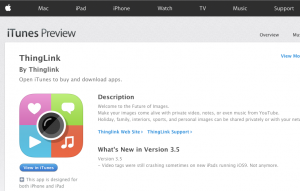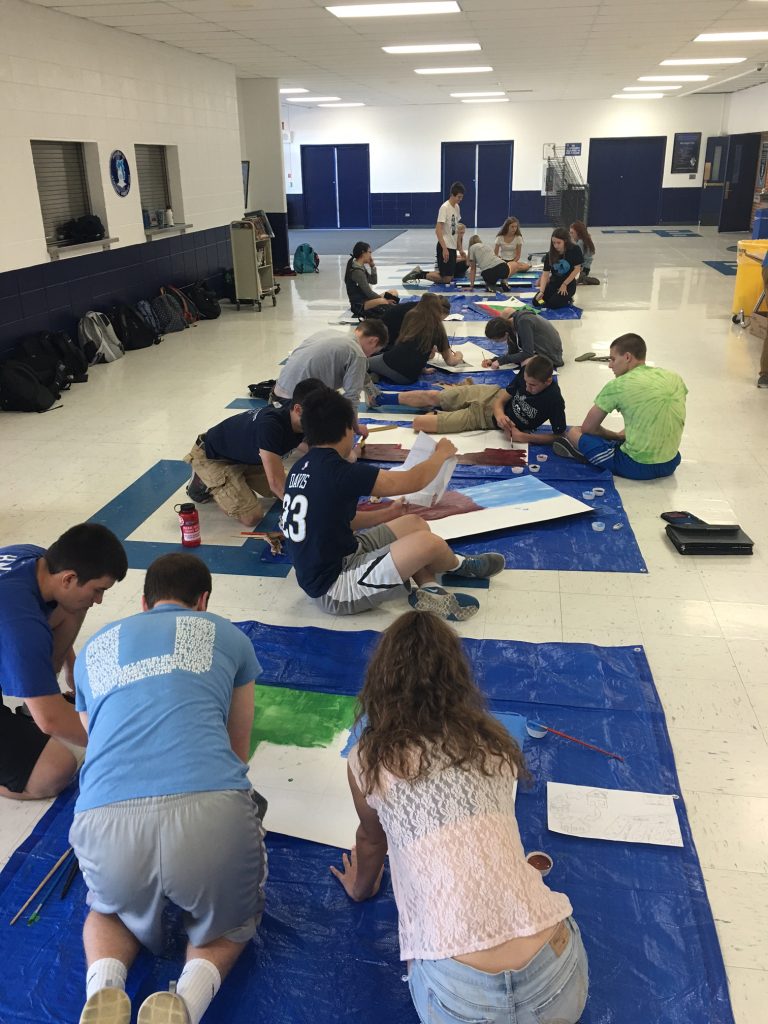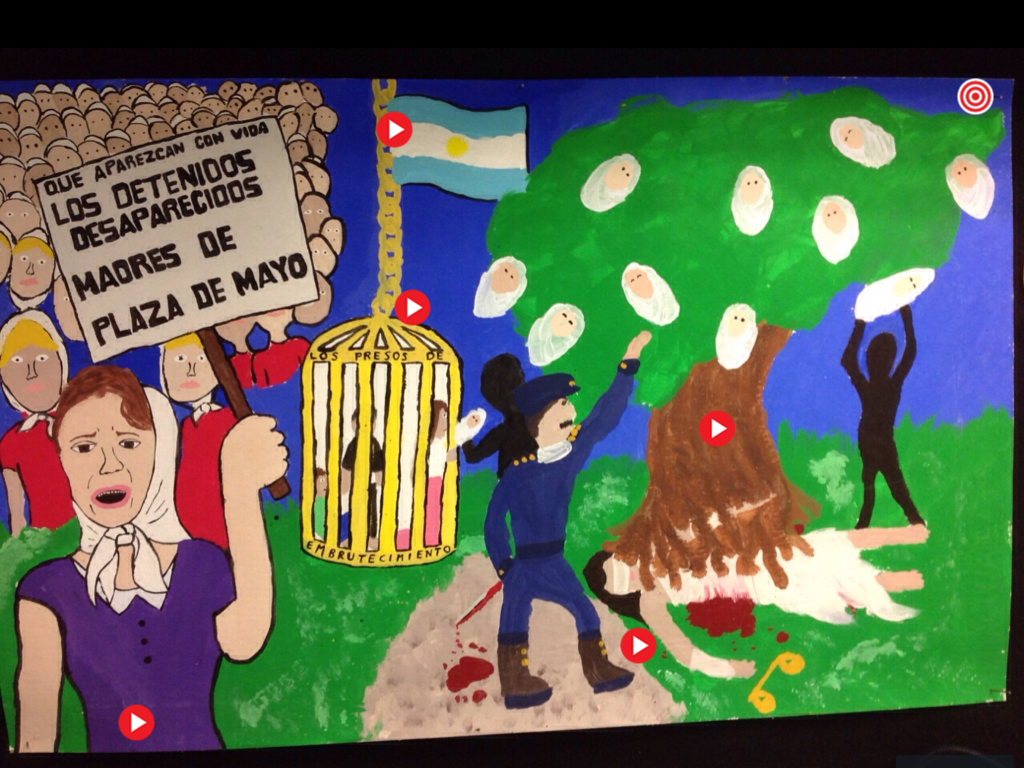A Whirlwind of Possibilities: Using ThingLink to Build Presentational Speaking Skills
 By Leigh M Sapp, NBCT Township High School District #214 Prospect High School, Mt Prospect, IL.
By Leigh M Sapp, NBCT Township High School District #214 Prospect High School, Mt Prospect, IL.
DOI: https://www.doi.org/10.69732/SYSW4455

Presentational speaking can strike fear in the hearts of many high school students and even more adults (See article by Shonu Nangia in this issue)! As World Language educators, we are constantly aware of Stephen Krashen’s affective filter hypothesis and how it comes into play in our classroom no matter what language, age or level. In my experience, as we try to maintain the balance between meaningful language acquisition for students by following ACTFL guidelines and preparing them for the College Board AP exam, any tool that provides a means to formatively assess language production, especially speaking, is worth investigating. To this end, this year I dabbled with ThingLink as a means to help students prepare for a summative, presentational speaking assessment and I was quite happy with the results. My brain is awhirl thinking of ways to integrate this app into other classroom activities next year.

ThingLink is a web-based tool that allows users to add text, audio/video to an image of their choosing. The particular project I chose for my maiden voyage was student created murals. The students would ultimately need to give a presentational speech to their classmates on the concepts and techniques they integrated into their mural. My goal for them has always been that the image they worked so hard to create would guide their language production as a visual outline. This assessment is for a fourth year pre-AP class. This collaborative experience is designed to prepare them for individual presentational speaking assessments next year, which are designed to mimic the AP Spanish Language Exam. Even for students who excel, remembering large amounts of information and specific details presents a challenge. In addition, for many of my students who have anxiety over speaking in their native language, not to mention their language of study, this was a very stressful and daunting task. ThingLink afforded all students a pathway to proficiency with the task that I never experienced in years prior. This was the first year that not a single student feigned illness, tried to hide index cards behind their mural or write sentences on their palms! I credit this success to integrating the creation of a ThingLink into the project requirements as a formative step towards the presentational speaking requirement.
My millennial learners love to use their school issued iPads and their personal devices to capture every moment of their day. I had observed that many of them would record themselves before speaking assessments for practice, deleting the video and repeating until they were happy with their results. When I first saw ThingLink, I saw an opportunity to blend what they liked to do with what the task required of them. The big picture goal was that each student would be able to sustain 2-3 minutes of presentational speaking, utilizing the image as a visual outline. By creating sentences to express themselves, practicing and then adding their voice to an image of their work proved the formative step they needed to have the image guide their speech.
Because this was the first time I had assigned a ThingLink to students, I had them work in groups and only required each student to make one recording to contribute to their group. I found that almost all groups recorded many more samples than required on specific parts of their group’s image as a means of practicing for their final speaking assessment. The results were incredible! Many lower achieving students who would never have voluntarily practiced prior to their presentation enjoyed the most success with this method. Once recorded, they could listen over and over again to parts of their speech, seeing exactly which part of the mural they were referencing. They could also listen to what other group members had recorded which allowed for greater group cohesion, additional inspiration and no repetition of information (See a sample here). Creation of the ThingLink had boosted their self-confidence and helped lead them towards successfully achieving their goal. After 25 years teaching Spanish to all levels, I know when something just works.

ThingLink works and I will be using it much more in the future. I’m currently entertaining the idea that my level two students could take a picture of a place setting during the food unit and narrate a description of each piece of silverware-what it is used for and its location in relationship to the plate! Oh… or an upper level class could take a picture of Guernica by Picasso and relate information about the Spanish Civil War…Oh! Or the project when they narrate a picture of a family event… Awhirl I tell you…awhirl…
Intrigued? Here’s more!
Gallery of 2016 student murals, blogs and ThingLinks
REFERENCES
Stephen D. Krashen Principles and Practice in Second Language Acquisition (Pergamon Press Inc., 1982).

